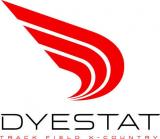Folders |
An interview with Phil Snyder, director of ‘Pride is Forever’Published by
by John Dye Phil Snyder, a classmate of Anthony Armstrong at Kennewick, Wash.’s Kamiakin High School, quit the track team in order to pick up a camera and start filming last spring. Pride is Forever story by Doug Binder Here is an interview with Snyder, who produced, directed, filmed and edited the project. 1. What previous experience did you have doing this sort of documentary storytelling? I first picked up a Flip video camera to create a documentary of my junior year of cross country for my culminating project in high school. I couldn’t film all the time, since I was actually running in the races I was trying to document, so I had junior varsity runners film the races for me. My instructor and my friends really liked it, but I could tell that it wasn’t something that someone who had no idea who our team was would be interested in. In 2011 I bought a DSLR that could record video (Canon T2i) and started making more professional looking videos. I shot a documentary on Anthony’s 1600m state championship race that year, shot another short doc on our cross country team at State, and even shot a documentary on my school’s homecoming football game. This all led up to what would be the conception of Pride is Forever in the Spring of 2012. 2. What sort of references did you use to guide your process on Pride is Forever? (Meaning, did you try and model it after Hoop Dreams, etc.) Surprisingly, I didn’t watch very many sports documentaries before attempting to shoot Pride is Forever. In a sense, it was kind of a lost cause because the guys that make these kind of movies consider two cameramen and a sound guy to be ‘barebones’ production. It was already decided that I was going to film this alone, which has its own advantages, most notably being a couple thousand dollars cheaper than hiring someone to be on my crew, so I didn’t expect to gain much from modeling my film after something that had already been done before. I had seen The Long Green Line a couple times but even that film was drastically different from what Pride is Forever was going to be in some ways. In The Long Green Line you have a coach who acts as a base and support for a humongous cross country team, but in Pride is Forever you have Anthony who’s the tip of the pyramid and is supported nearly entirely by himself and his coaches. I wanted Pride is Forever to be made up almost completely by live-action footage, not clogged up by a bunch of B-roll or special effects or talking heads in an interview. 3. How did you approach Anthony with this idea? How receptive was he to it and what sort of ground rules did you establish? I had alluded to the idea of a documentary on his track season a couple times and he seemed pretty enthusiastic about the idea. When I decided that I really did want to make this happen I asked him if it was okay if I shot a documentary on his final year of track, but by that point it was already a given. I remember we were both pretty excited about the idea. As far as ground rules went, Anthony just didn’t want anything indecent or embarrassing being filmed, understandably. I wasn’t trying to make the movie a gossip compilation.; if it didn’t contribute to the story or provide continuation it was cut from the final film. 4. What were the biggest challenges to filming? The biggest challenges were providing a visual explanation for events that largely go unsaid, i.e. are mostly implied. Anthony had already ran three years of track before I showed up with my camera to document the fourth, so a lot of the pre-race rituals were never explained by a coach imparting his wisdom on the athlete. Anthony already knew what was expected of him, even if the audience didn’t. Anyone that has been to a big track meet knows about the energetic atmosphere and the excitement of watching a fast race. But, by simplifying a track meet down to the mundane of show up, warmup, race, cooldown you can tell there’s a big gap between two perspectives of the exact same event. I tried to provide a perspective that offers a vicarious look into Anthony’s races. 5. Were there times Anthony just wanted you to go away? I’m sure there were, although I bet he would never admit to any. When you follow someone around with a camera, people notice. It was awkward at times, but if it was any other way the movie wouldn’t have turned out as well as it did. Since the awkward moments were most often the most personal moments (and thus the most valuable), you simply had to ignore what other people thought of you to get the job done. 6. Obviously, the story turned out much different than you anticipated. He didn’t have the type of spring that many had predicted. It became more a story of struggle and managing expectations than about the glory of records and championships. How worried did you get as things started unfolding in a way you hadn’t foreseen? Worried? Slightly, but not in the way you might think. I had wanted to make a movie, and I was doing it! Mission accomplished! Often times during the season I would be stressed because I wouldn’t go to every practice to film. Nothing interesting ever happened, and it was incredibly boring when I would go and ride with Rexus in the van for a few hours, but still, I was worried that I was missing something important – that I wouldn’t ever have a chance again to film what I was missing out on. Life has the tendency to be filled with long stretches of torpor then switch gears suddenly into a flurry of excitement. I tried to maximize my chances of filming the excitement by going to every meet, but I was still worried that I was doing something wrong or there was something I could be doing better. I think the movie turned out very well considering the general premise of ‘fast high school distance runner’ that I had to work with. 7. In a sense, it must have become a bit more humbling for Anthony, too. Was there ever any worry that the commitment to the project would be fractured by the disappointment of some of the meets? No, not really. There was still hope that things would turn around all the way up until the end, so that helped keep me going. But once I had started the filming, completing the film had become like breathing: I had to do it. Breathing isn’t very exciting most of the time, but you have to do it if you want to have a chance to live out what really matters. 8. How did the editing process go? How much film did you have and how much did you end up cutting? I took over 1000 different cuts that added up to more than 10 hours of film to pour over. I wasn’t exactly eager to begin the editing process after the season ended – I don’t think I got around to putting clips in order until around July. But once I began I treated editing like a day job, and managed to get a rough cut together in about two weeks. Another week after that I managed to cut six more minutes of extra “fat” off the film, and that was more or less what ended up in the final product. 9. What message do you think this video delivers to other HS runners? Life is unpredictable. If you train hard, you might win, you might lose. Are you more likely to win if you train hard? Well, maybe. In Anthony’s case, a sickness that was completely out of his control diminished what had promised to be a season running at the top of nation. The moral of the story, though, is not to travel everywhere in a sterilized bubble. Anything could happen, your parent loses a job and you have to move, shin splints, overwhelming school work or social situations. If you want to go with the 100% bet, enjoy the journey, don’t depend on the destination. As cliché as that is, it’s profound when put into action. Going off on a tangent here, I was out on a run this morning when I realized why we race, whether you’re consciously aware of it or not. Today in racing, there’s such a large emphasis on the training, stretching, eating right, competing with others that it tends to conflate itself with the real battle inside of you. When you’re in a race and you begin to tire in the second half, you’re not slowing down because you aren’t in shape or because you’re tired, you slow down because you’re afraid. Afraid of what will happen if you keep pushing, hold the pace, forcibly stand against what your mind is telling you. When you see a field of runners all competing to be the first to cross the finish line, they aren’t actually running against each other. They’re all running against themselves, to each their own individual race. It’s the runner that is able to conquer the fear inside of themselves the greatest that becomes the victor, not the one who is the fastest, or executes the best strategy. I don’t think anyone would get this directly from the film, but perhaps indirectly, as I did. 10. What did you learn along the way about the film making process that surprised you? The amount of emotional baggage you attach to the project you’re working on. When you spend months and months on one thing, you impart a piece of yourself into it. Pride is Forever isn’t just a collection of clips coherently arranged to tell a story, it’s also an embodiment of Phil Snyder. Nobody else could have made that film the way I made it, and that’s pretty special. Of course, if someone else had made the film then you could easily substitute their name for “Phil Snyder” in the preceding sentence, but that doesn’t diminish it’s uniqueness in any way. What I learned about the film making process through this film has applications way beyond actual filmmaking. A film was just the medium I chose to impart this invisible piece of me out into the world. More news
History for Kamiakin High School Track & Field and Cross Country - Kennewick, Washington
Show 8 more
|








